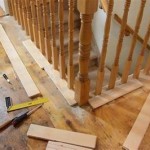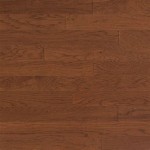Best Wooden Flooring For Underfloor Heating
Underfloor heating (UFH) provides a consistent and comfortable heat distribution throughout a room, offering an alternative to traditional radiators. While compatible with various flooring types, selecting the correct wooden flooring is crucial for optimal performance and longevity. The interaction between wood and heat requires careful consideration of factors such as wood type, thickness, and fitting methods.
This article explores the various aspects of choosing the best wooden flooring for underfloor heating systems, outlining the key considerations and providing guidance on selecting materials that maximize efficiency and prevent potential issues like warping or cracking. The objective is to furnish readers with comprehensive information to make informed decisions when integrating wooden floors with underfloor heating.
The suitability of wood flooring for UFH hinges on its thermal conductivity, dimensional stability, and moisture content. Wood is a natural insulator, which means it resists the flow of heat. Therefore, a flooring material with low thermal resistance is preferable to allow efficient heat transfer from the UFH system into the room. Dimensional stability refers to the wood's ability to resist expansion and contraction in response to temperature and humidity fluctuations. Instability can lead to gaps, warping, and other damage. Finally, maintaining the correct moisture content within the wood is essential for preventing excessive movement and maintaining structural integrity. These factors are deeply intertwined and must be carefully evaluated to ensure a successful installation.
Understanding Thermal Resistance and Wood Species
Thermal resistance, often denoted as R-value, measures a material's ability to resist the flow of heat. A lower R-value indicates better thermal conductivity. For UFH compatibility, wooden flooring should ideally have a low R-value to allow the heat to penetrate the floor surface efficiently. Building regulations often specify maximum R-values for flooring used with UFH to ensure efficient system operation.
Different wood species possess varying degrees of thermal resistance and dimensional stability. Hardwoods generally exhibit greater density and stability compared to softwoods, making them a more suitable choice for UFH. However, the specific species still plays a significant role. Some popular choices include:
- Engineered Wood: Engineered wood flooring is often considered the best option for UFH. It consists of a top layer of hardwood bonded to multiple layers of plywood or other composite materials. This construction method provides superior dimensional stability because the alternating grain direction minimizes expansion and contraction. Engineered wood also tends to have a lower thermal resistance than solid wood, allowing for more efficient heat transfer.
- Oak: Oak is a popular and relatively stable hardwood species. While its thermal resistance is slightly higher than some other options, it remains a viable choice if properly installed and maintained. Its inherent durability and classic aesthetic make it a desirable option for many homeowners.
- Walnut: Walnut is another hardwood favored for its rich color and grain pattern. While it is generally stable, it can be more susceptible to moisture changes than oak. Careful acclimatization and moisture control are crucial when using walnut with UFH.
- Bamboo: Bamboo flooring, particularly strand-woven bamboo, offers excellent thermal conductivity and stability. Its dense composition and unique manufacturing process make it a suitable choice for UFH, although it's important to source bamboo from reputable suppliers to ensure ethical and sustainable practices.
Species to avoid or use with extreme caution include solid wood flooring from less stable species like beech or maple, which are highly prone to movement with temperature and humidity fluctuations. If solid wood is chosen, it should be kiln-dried to a low moisture content and properly acclimatized to the environment before installation. It is also preferable to choose narrower boards to minimize the visible impact of any expansion or contraction.
Thickness and Installation Methods
The thickness of the wooden flooring significantly impacts its thermal resistance. Thicker planks inherently provide more insulation, impeding the transfer of heat. Therefore, thinner flooring is generally more suitable for UFH. Ideally, the total thickness of the wood flooring should not exceed 18mm. Engineered wood flooring typically offers a range of thicknesses, allowing for greater control over thermal resistance.
Proper installation is paramount for ensuring the longevity and performance of wooden flooring with UFH. Different installation methods can influence heat transfer and stability. The most common methods include:
- Floating Floor: This method involves laying the flooring planks over an underlayment specifically designed for UFH. The planks are typically connected using a tongue-and-groove system but are not directly attached to the subfloor. This allows for movement due to temperature fluctuations. An underlayment with low thermal resistance is crucial for efficient heat transfer.
- Direct Glue-Down: Bonding the wooden flooring directly to the subfloor with a flexible adhesive offers the best heat transfer and stability. This method minimizes air gaps and maximizes contact with the heat source. However, it requires a perfectly level and clean subfloor and should only be performed by experienced installers.
- Secret Nailing/Screwing: This method is less ideal for UFH as it can create air gaps and restrict movement. Fasteners can also potentially damage the heating pipes. If nailing or screwing is used, it is essential to ensure that the fasteners do not penetrate the heating elements.
Regardless of the installation method, an expansion gap must be left around the perimeter of the room to accommodate movement. The size of the expansion gap will depend on the species of wood, the width of the floor and the expected temperature variations. The manufacturer's recommendations should always be followed closely.
Acclimatization, Moisture Control, and Ongoing Maintenance
Acclimatization is the process of allowing the wooden flooring to adjust to the environmental conditions of the room before installation. This is crucial for minimizing movement after installation. The flooring should be stored in the room where it will be installed for at least several days, preferably a week or more, allowing it to reach equilibrium with the temperature and humidity levels.
Maintaining consistent humidity levels is vital for the long-term performance of wooden flooring with UFH. Wide fluctuations in humidity can cause excessive expansion and contraction, leading to warping, cracking, and gapping. A humidifier or dehumidifier may be necessary to maintain a stable humidity level, ideally between 40% and 60%.
Ongoing maintenance is essential for preserving the appearance and integrity of wooden flooring with UFH. Regular cleaning with a damp, not wet, mop is recommended. Avoid harsh chemicals or abrasive cleaners, as these can damage the finish. Applying a protective sealant or finish can also help to protect the wood from moisture and wear. The surface temperature of the floor should never exceed 27°C, controlled by thermostat. Drastic temperature changes should be avoided when turning the underfloor heating system on or off. It is important to consult with the flooring manufacturer and UFH installer for specific maintenance recommendations.
Furthermore, consider the overall building structure and insulation levels. Poor insulation can lead to higher heating costs and uneven floor temperatures. Addressing any insulation deficiencies before installing UFH will improve the system's efficiency and overall performance.

Guide To Choosing The Best Flooring For Underfloor Heating Exterior Solutions

Underfloor Heating For Wooden Floors Warmup

Best Flooring For Underfloor Heating Ufh Direct Wood Blog

How Do I Pair A Wood Floor With Underfloor Heating Greyspace Flooring

Install Underfloor Heating Under Wood Floor Discount Flooring Depotdiscount Depot Blog

The Best Flooring For Underfloor Heating Tapi Carpets

What Flooring Is Best For Underfloor Heating Supplies Direct

Engineered Wood Flooring And Underfloor Heating Ufh Esb

Installing Wood Flooring Over Underfloor Heating Esb

Guide To Heating Under Hardwood Flooring Warmup Usa
Related Posts








